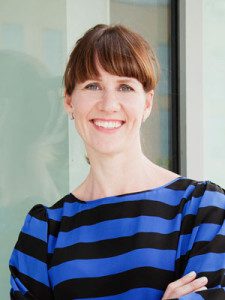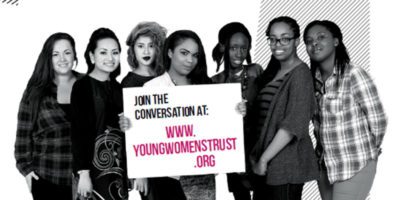Sarah runs Sarah Hall Consulting Ltd, the PR and marketing consultancy she established five years ago after a decade in PR agency. Having been involved with the Chartered Institute of Public Relations since the start of her career, she currently sits on its Executive Board and Council and is leading on its gender and diversity work. Sarah has been instrumental in the CIPR’s development of a new package to support public relations professionals though maternity leave and the return to work process in support of the CIPR’s 10,000 plus members based across the UK, of whom approximately 55% are female.

“…we need to reinforce that it’s healthy for working parents to strike a balance between work and family life. As we all know, anybody who’s happy at work is much more productive…”
Sarah – firstly congratulations on the new Chartered Institute of Public Relations package – a first for a UK professional body. Please can you explain a bit about the project background and your involvement?
I have been involved with the CIPR for over sixteen years, in more recent years by sitting on its Board and Council. This gender and diversity work is something the Institute has been looking at for a while and it became a key priority when the results of the annual CIPR State of the Profession Survey were received.
The report makes for difficult reading for anyone concerned with gender equality. We have an average pay gap of £12,000 in favour of men and are losing talented women at an inexcusable rate – maternity leave being a key point when this happens.
Ultimately it was clear that we had no choice but to act immediately.
Who else is supporting across the industry and beyond?
Our work is timely because gender balance and equal pay is being discussed as a priority at the highest level across all walks of industry.
Within the PR sector we have huge support from individual practitioners and employers, which is hugely positive as we push for change. Business bodies such as the 30% Club, Women in Marketing and Women in the City have all been very willing to share advice and best practice – hugely beneficial and representative of the appetite there is to achieve gender parity.
We have been absolutely thrilled to secure the support of Ruby McGregor-Smith from The Women’s Business Council and to have MPs like Nicky Morgan and Jo Swinson giving us their backing too. It shows how seriously we are taking this – long-term our ambition is to become an exemplar for other female dominated industries.
Maternity provision and returning to work for new mothers is of key importance. How do we ensure that women without children are also supported as they struggle to achieve equal pay and look for work / life balance?
The maternity leave package provides a solution to some specific needs of a key group of stakeholders but there is a clear need to ensure all our female practitioners are well supported.
The fact of the matter is that many struggle as they move up the career path into leadership positions.
At the CIPR we have started to promote senior role models – sharing their experiences is key in helping others navigate any challenges faced. Mentoring is vital and we are currently formalising the structures we have in place to make the scheme as relevant and scalable as possible. Making sure that there’s plenty of guidance and a support structure for young female professionals is absolutely essential.
In terms of the pay gap, the CIPR is holding a Hack Day in November this year with the specific aim of looking at what practical measures we can introduce. It’s not something we can change overnight but we plan to make significant inroads into the issue.
Last but not least a flexible working initiative that will shortly be introduced by the CIPR should also help. This is a non-gender specific package, as we have all been affected by the rise of 24-7 media and the digitisation of the industry. More details of that will follow on Wednesday 10th September.
How do we change the culture of the workplace to encourage working fathers to take up the option of shared parental leave when it is introduced next year?
Firstly we need to reinforce that it’s healthy for working parents to strike a balance between work and family life. As we all know, anybody who’s happy at work is much more productive.
Normalising shared parental leave is important and at the CIPR we have plans to profile as many people as we can who are championing it, particularly the early adopters. People need to see that it can work incredibly successfully for all parties – and we need to explain how it can help in the push towards parity.
A big culture change is needed to get to a point where businesses are no longer worrying about employing women of child-bearing age.
However it is also vital to remember that one size doesn’t fit all so shared parental leave, as maternity leave is now, will always be an ongoing dialogue between the employer and employee.
What other initiatives is the CIPR working on to address gender balance?
We have a fantastic diversity working group and there are lots of things they’re looking at. We’re a volunteer body so it’s a case of prioritising issues and then delivering those that will have the most impact and be sustainable. We’re always looking for additional support so if any members or people outside the industry think they can help, they’re welcome to contact us.
As you know, the CIPR maternity package has been incredibly well received and we hope for the same response to our flexible working guide, which includes nine recommendations for how this can be put into practice effectively. Sorry to tease but until it’s launched, I can’t say more than that.
Our CIPR mentoring programme was introduced as a trial in July 2014 and is working incredibly well. It’s all about supporting professional development and providing a link between experienced and future talent. That is certainly going to be developed further.
The biggest nut for us to crack however is how to solve this issue of the gender pay gap of what is on average a £12,000 discrepancy in favour of men in the PR industry. Our November Hack Day with public relations leaders and key people outside of the profession should help deliver a number of practical measures we can implement in the New Year but as a field of work, this is going to keep us going for quite some time.
How do you feel about the dilemma over whether to introduce quotas to bring more women into senior roles as has happened in some countries such as Norway, France, Belgium, Iceland, Italy, the Netherlands, Spain, Malaysia and Brazil?
The CIPR doesn’t have a formal stance on this, but my personal view is that they’re a necessary evil while the barriers facing women are still being addressed.
There’s a great quote from the Equality and Human Right Commission from 2008 that’s cited in the Women on Boards Report that says, “If we continue to leak women from the talent pipeline at the rate we currently do it will be very difficult to change the gender balance of UK board. Our estimate is that it will take 70 years to achieve gender balance at the current rate of change.”
The challenge faced is very stark when you see it in black and white, so while I’d like to think appointments were open to all and based on merit, we’re not there yet. Quotas are therefore useful as an interim measure.
There are numerous programmes and initiatives going on in corporates and professional organisations across the globe. How do we bring together the learning from so many projects in order to increase the momentum of change?
Good question. This is where professional bodies like the CIPR have to take the lead because they can be the ones to research the issues, work with other bodies and institutes to find out what is happening and share learnings and best practice. We can also put pressure on to ensure any practical measures are implemented much more widely.
You always have to look outside of the industry you’re working in to understand the wider context and general views. Thankfully there is a general acceptance that today’s workplace does not deliver the right support for women and we are just one of a number of players doing what we can to change that. I guess what I am saying is watch this space!
You can learn more about the support package here:
https://www.facebook.com/CIPR.UK
https://www.linkedin.com/company/cipr-chartered-institute-of-public-relations





